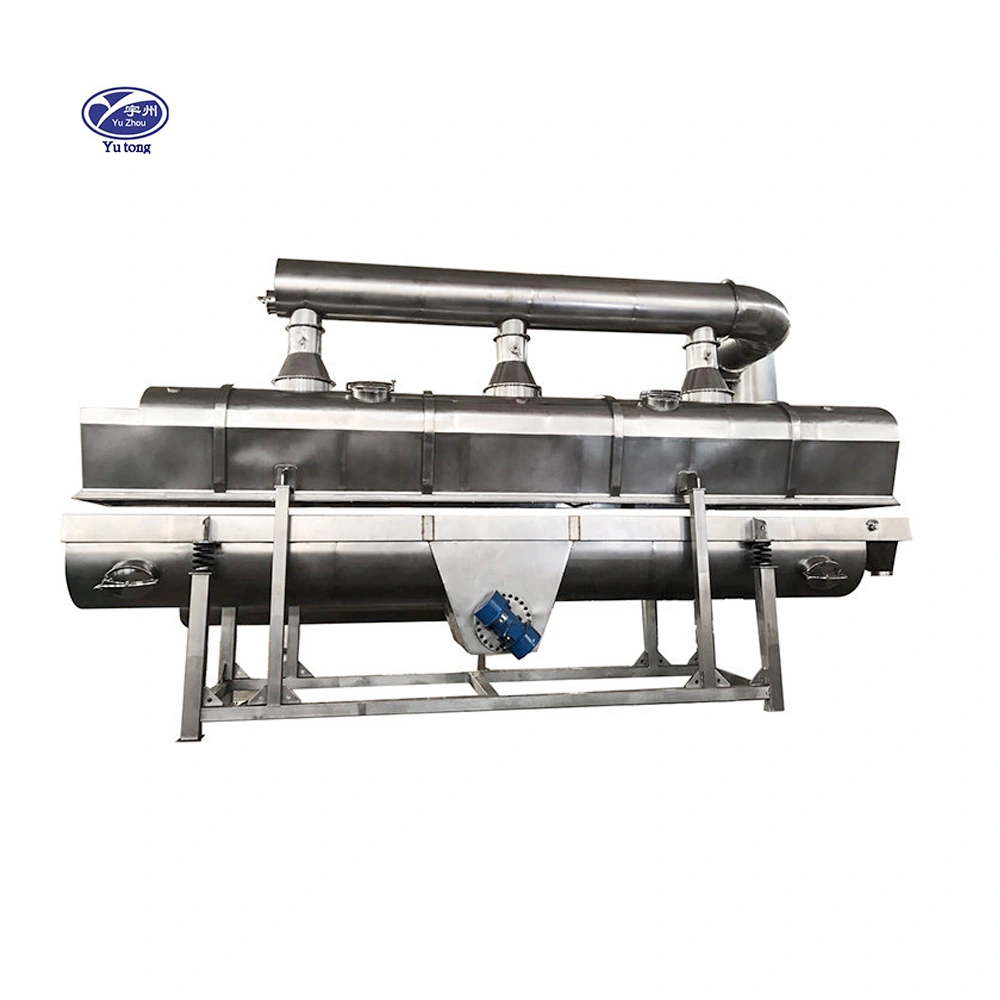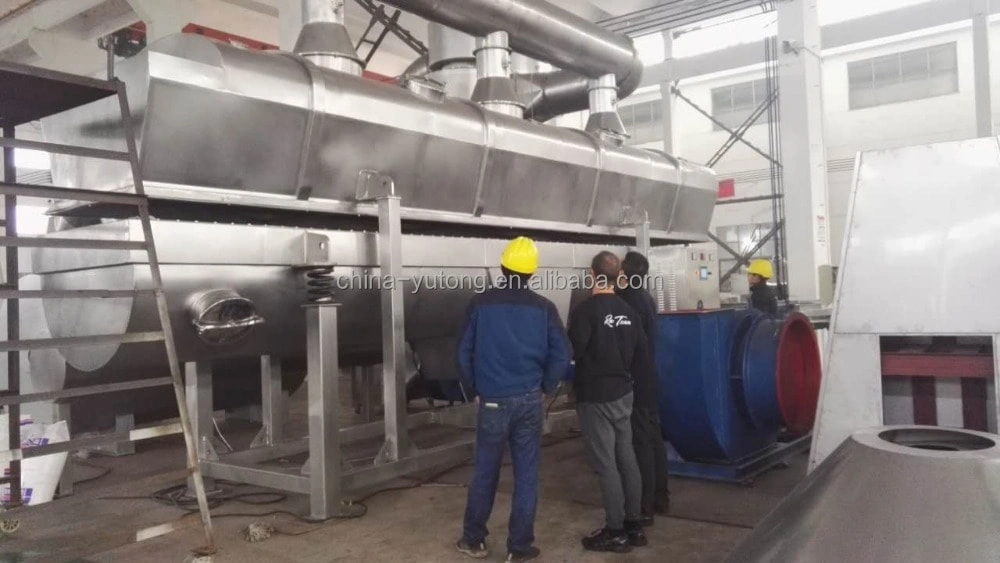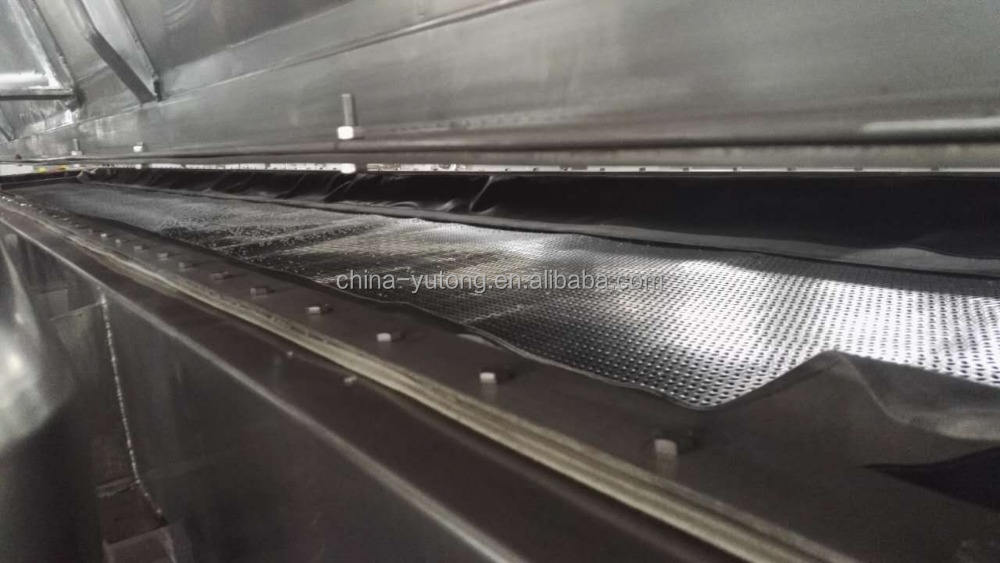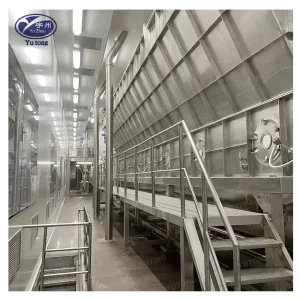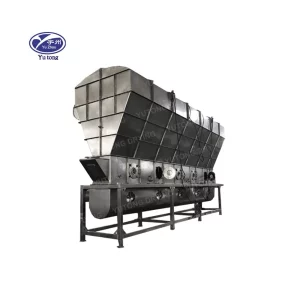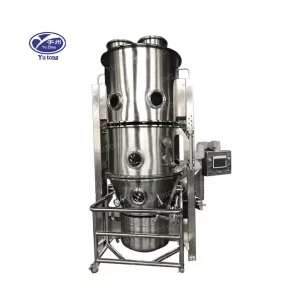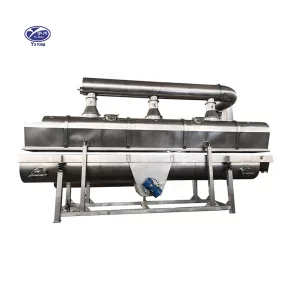Table of Contents
Product Detail
In the realm of industrial drying equipment, the fluidized bed dryer stands out for its efficiency and versatility. Whether you’re in pharmaceuticals, food processing, or chemical manufacturing, understanding the cost implications of investing in a fluidized bed dryer is crucial. This guide will delve into the factors affecting fluidized bed dryer prices, the benefits of various models, and where you can find the best deals, including used options.
What is a Fluidized Bed Dryer?
A fluidized bed dryer is an equipment used to reduce the moisture content of powdered and granular materials. It operates by passing hot air through a perforated bottom, causing the particles to become suspended or “fluidized.” This process ensures uniform drying with minimal energy consumption.
How Does It Work?
The fluidization technique allows for efficient heat and mass transfer, which speeds up the drying process. The dryer can handle a wide range of materials, making it a popular choice across different industries. The hot air passes through the material at high velocity, creating a fluid-like state for the particles. This fluidized state facilitates uniform drying and prevents material clumping.
Furthermore, the ability to adjust parameters like airflow and temperature offers control over the drying process, ensuring optimal results for different materials. The flexibility of these parameters makes fluidized bed dryers adaptable to various manufacturing needs, enhancing their value in diverse industrial settings.
Applications Across Industries
Due to their adaptability, fluidized bed dryers are indispensable in numerous industries. In the pharmaceutical sector, they dry granules and powder mixtures, ensuring consistency in medication production. In food processing, they help dry products like grains and cereals, preserving their quality and nutritional value. Chemical manufacturers utilize these dryers for drying compounds and catalysts, optimizing their production processes.
Fluidized bed dryers are a preferred choice because they can handle various materials without compromising drying efficiency. This versatility is further enhanced by the possibility of integrating additional features, like coating or granulation, expanding their functionality beyond simple drying tasks.
Types of Fluidized Bed Dryers
Fluidized bed dryers come in several configurations, each suited to specific applications. Continuous fluidized bed dryers are ideal for large-scale operations that require uninterrupted processing. Batch dryers are suitable for smaller operations or when processing distinct batches with varying properties. Additionally, vibratory fluidized bed dryers introduce mechanical vibration to enhance fluidization, which is beneficial for cohesive or sticky materials.
Choosing the right type depends on your specific operational needs, including the nature of the material and the desired production scale. Understanding these types aids in selecting the most cost-effective and efficient solution for your drying requirements.
Factors Influencing the Price of Fluidized Bed Dryers
The cost of a fluidized bed dryer can vary widely based on several factors. Understanding these can help you make an informed purchasing decision.
Size and Capacity
The size of the dryer and its capacity to handle different volumes of material play a significant role in determining the price. Lab-scale fluidized bed dryers are generally less expensive than industrial-scale models. Larger dryers with higher throughput capabilities naturally incur higher costs due to their increased material and energy requirements.
When considering size and capacity, it’s essential to evaluate your production needs accurately. Oversizing can lead to unnecessary expenditure, while undersizing may result in inefficiencies and production bottlenecks. Therefore, aligning the dryer’s capacity with your current and future production goals can optimize your investment.
Manufacturer and Brand
The reputation and reliability of the manufacturer also affect pricing. Established brands like Glatt offer high-quality fluidized bed dryers with advanced features, which can be more expensive than those of lesser-known manufacturers. Brand reputation often correlates with the quality of materials used, the durability of the equipment, and the availability of after-sales support.
However, lesser-known brands might offer competitive prices and features but require thorough vetting of their product quality and service reliability. Researching user reviews and industry feedback can provide insights into the performance and reliability of different brands, aiding in your decision-making process.
Features and Technology
Advanced features such as automation, precise control systems, and energy-efficient designs can increase the cost. For example, a Glatt spray dryer may come with sophisticated technology that justifies a higher price tag. Automation features allow for consistent operations with minimal human intervention, improving efficiency and reducing labor costs over time.
Although initially more costly, energy-efficient designs can result in significant savings on operational costs, making them an attractive option for long-term investments. Additionally, technological advancements such as digital monitoring systems and IoT integrations enhance operational oversight and maintenance efficiency, further justifying their higher initial cost.
New vs. Used
Purchasing a used fluidized bed dryer can offer significant cost savings. However, it’s essential to evaluate the condition and maintenance history of any used equipment thoroughly. Used equipment can be a viable option if it has been well-maintained and comes from a reputable source.
Inspecting the equipment for wear and tear, checking its service records, and ensuring the availability of spare parts are critical steps in assessing used dryers. Additionally, understanding the reasons for the sale and seeking expert evaluations can help mitigate risks associated with purchasing pre-owned equipment.
Fluidized Bed Dryer Price Range
The price of fluidized bed dryers can range from a few thousand to several hundred thousand dollars. Here’s a general breakdown:
Lab Scale Fluidized Bed Dryers
Lab-scale fluidized bed dryers are designed for research and development. They are compact and typically cost between $5,000 and $30,000, depending on the features and brand. These units are ideal for small-scale testing and production, offering flexibility in processing small batches with precision.
The cost variation often depends on additional features like advanced control systems, which can enhance precision in experimental settings. Opting for a basic model might suffice for standard applications, but investing in a feature-rich model could be beneficial for complex research needs.
Industrial Fluidized Bed Dryers
Industrial fluidized bed dryers are necessary for large-scale operations. These units can range from $50,000 to over $200,000. The capacity, technology, and manufacturer influence the price. Industrial models are built to withstand continuous use and high throughput, making them suitable for demanding environments.
Investing in industrial dryers often involves considering long-term operational efficiency and durability. Features like robust construction, ease of maintenance, and energy efficiency can justify the higher initial investment by reducing long-term operational costs and downtime.
Used Fluidized Bed Dryers
Used fluidized bed dryers offer a more budget-friendly option. Prices can vary significantly based on the equipment’s age, condition, and brand. You might find used units for as low as $10,000 or as high as $150,000. The price often reflects the equipment’s remaining lifespan and technological capabilities.
When considering used options, it’s essential to weigh the benefits of immediate cost savings against potential future expenses related to repairs and maintenance. A well-maintained used dryer can be a cost-effective solution, but ensuring its compatibility with your operational needs is crucial.
Where to Buy Fluidized Bed Dryers
Purchasing a fluidized bed dryer requires careful consideration of your specific needs and budget. Here are some options to explore:
Manufacturers and Suppliers
Buying directly from fluidized bed dryer manufacturers in India or other countries can ensure you get a new unit with a warranty. Brands like Glatt are well-regarded in the industry for their quality and reliability. Direct purchases often come with the advantage of customization options to meet specific operational needs.
Additionally, manufacturers may offer training and support services, ensuring your team can operate the equipment efficiently. Establishing a direct relationship with the manufacturer can also facilitate access to future upgrades and spare parts, enhancing the long-term value of your investment.
Online Marketplaces
Websites like eBay and Alibaba offer a variety of new and used fluidized bed dryers. These platforms can be an excellent place to compare prices and features. However, buying from online marketplaces requires diligence in verifying the authenticity and condition of the equipment.
Engaging with sellers who have positive ratings and reviews can help ensure a reliable purchase. Additionally, utilizing secure payment methods and understanding the return policies can provide added security when making online purchases.
Equipment Dealers
Specialized dealers often have a range of used vibrating fluid bed dryers and other models. These dealers can provide valuable insights into the equipment’s history and maintenance. Purchasing from a dealer can also offer the advantage of post-purchase support and warranty options, giving peace of mind.
Dealers often specialize in specific types of equipment and can offer guidance on the best options for your needs. Building a relationship with a reputable dealer can also facilitate future purchases and equipment servicing, contributing to smoother operations.
Benefits of Investing in a Fluidized Bed Dryer
Efficiency and Performance
Fluidized bed dryers offer superior drying performance with minimal energy consumption. They provide uniform drying, which is crucial for maintaining product quality. The energy-efficient design not only reduces operational costs but also contributes to a smaller environmental footprint, aligning with sustainable business practices.
The ability to achieve consistent drying outcomes enhances product quality and reduces waste, improving overall production efficiency. This efficiency is particularly beneficial in industries where product consistency and quality are paramount, such as pharmaceuticals and food processing.
Versatility
These dryers can handle a variety of materials, making them suitable for multiple industries, from pharmaceuticals to food processing. The versatility extends to processing different particle sizes and moisture contents, adapting to various production requirements without compromising efficiency.
Fluidized bed dryers can also be adapted for additional functions such as granulation or coating, expanding their application scope. This adaptability makes them a valuable asset in dynamic production environments where flexibility is crucial.
Scalability
Whether you need a lab-scale fluidized bed dryer for small batches or an industrial model for large-scale production, these dryers can meet your demands. The ability to scale operations seamlessly allows businesses to grow without significant reinvestment in drying technology.
Scalability ensures that production efficiency and quality can be maintained as your business expands, providing a future-proof solution. Investing in scalable technology helps manage costs and resources effectively, supporting long-term business growth.
Conclusion
The price of fluidized bed dryers can vary widely, but understanding the factors that influence cost can help you make the right decision. Whether you’re considering a new or used fluidized bed dryer, weighing the benefits of different models and manufacturers will ensure you invest wisely.
Remember, while cost is a significant consideration, the efficiency, technology, and support that come with your purchase are equally important. By exploring options from reputable manufacturers and considering used equipment when appropriate, you can find a fluidized bed dryer that fits your needs and budget.
In the ever-evolving world of industrial drying, staying informed about the latest technologies and market trends will help you make the most of your investment in a fluidized bed dryer. Understanding these factors not only aids in making an informed purchase but also maximizes operational efficiency and product quality, contributing to overall business success.
Specifications
|
Model
|
Area of fluidized-bed
(㎡) |
Temperature of inlet air (P)
|
Temperature of outlet (°C)
|
Capacity to vapor moisture(kg/h)
|
Vibration motor
|
|
|
Model
|
Power kw
|
|||||
|
ZDG3x0.30
|
0.9
|
70 to 140 |
40 to 70 |
20 ~ 35
|
YZS8-6
|
0.75×2
|
|
ZDG4.5×0.30
|
1.35
|
35 ~ 50
|
YZS10-6
|
0.75×2
|
||
|
ZDG4.5×0.45
|
2.025
|
50 ~ 70
|
YZS15-6
|
1.1×2
|
||
|
ZDG4.5×0.60
|
2.7
|
70 ~ 90
|
YZS15-6
|
1.1×2
|
||
|
ZDG6x0.45
|
2.7
|
80 ~ 100
|
YZS15-6
|
1.5×2
|
||
|
ZDG6x0.60
|
3.6
|
100 ~ 130
|
YZS20-6
|
1.5×2
|
||
|
ZDG6x0.75
|
4.5
|
120 ~ 170
|
YZS20-6
|
2.2×2
|
||
|
ZDG6x0.9
|
5.4
|
140 ~ 170
|
YZS30-6
|
2.2×2
|
||
|
ZDG7.5×0.6
|
4.5
|
130 ~ 150
|
YZS30-6
|
2.2×2
|
||
|
ZDG7.5×0.75
|
5.625
|
150 ~ 180
|
YZS40-6
|
3.0×2
|
||
|
ZDG7.5×0.9
|
6.75
|
160 ~ 210
|
YZS40-6
|
3.0×2
|
||
|
ZDG7.5x 1.2
|
9.0
|
200 ~ 280
|
YZS50-6
|
3.7×2
|
||
|
ZDG7.5x 1.5
|
11.25
|
230 ~ 330
|
YZS50-6
|
3.7×2
|
||
|
ZDG8x 1.8
|
14.4
|
290 ~ 420
|
YZS75-6
|
5.5×2
|
||
Applications
Applicable Industries:
Building Material Shops, Manufacturing Plant, Machinery Repair Shops, Food & Beverage Factory, Farms, Retail, Energy & Mining, Food & Beverage Shops

